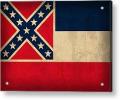
Time has dimmed the memory but in 1987 I was in a welding, forging, and foundry class at Mississippi State University.
For the forging part, we had to make a chisel from hexagonal bar stock. We had to heat it up, chop it to length, form the chisel edge and temper it in such a way the point was hart as a whore's heart and it progressed to a relatively soft spot that the hammer struck.
The old professor said he selected the steel after reviewing the 400 most common steels. He picked the one we used because the tempering temperature could be determined by visual means. When the bar stock appeared to look like the mirage on a blacktop highway, shimmering, it was at the right temperature to remove it from the furnace, place on an anvil, and beat the crap out of it. When it went from red to black, we quit hitting it, in accordance with the axiom, only strike when the iron is hot, which means red, which means over 1000 deg F.
Once the chisel was roughly hammered out, and still red hot, it went to a bench grinder to fashion the chisel. Once the chisel point was formed we put it back in the forge till we saw "running water" visually and then hit it with the grinder to take the oxidation off so we could see the colors, purple and straw. I forget the specifics, but when the purple came, we dipped the point in the water quench, in and out. Then the straw color came and we quenched that area. Eventually we dunked the whole thing and prayed we did it right. The vast majority of us made a tool that passed the Rockwell tester on the C scale and we just had ONE time to get it right. No do overs.
The 1903 receiver is a complexly machined part with thick and thin areas I didn't have to deal with with my chisel. However, my chisel had to be hard on one end and soft on the other. At least a 1903 receiver only has to be uniform in hardness.
The forge we used was fueled by natural gas, it was as old as the hills, it was basically the size and shape of a 5 gallon bucket laying on it's side. The room had a lot of glass windows and fluorescent lighting. Looking in the forge for the "water" dancing on the steel, I can't imagine how a sunny or cloudy or thunderstorm day would have mattered one whit to me looking inside the 5 gallon bucket blazing with orange fire. From what I know, I'd call what we did a single heat treatment.
That's the sum of my forging experience, and I still have the chisel someplace.
Phillip McGregor (OFC)
"I am neither a fire arms nor a ballistics expert, but I was a combat infantry officer in the Great War, and I absolutely know that the bullet from an infantry rifle has to be able to shoot through things." General Douglas MacArthur



 Reply With Quote
Reply With Quote


